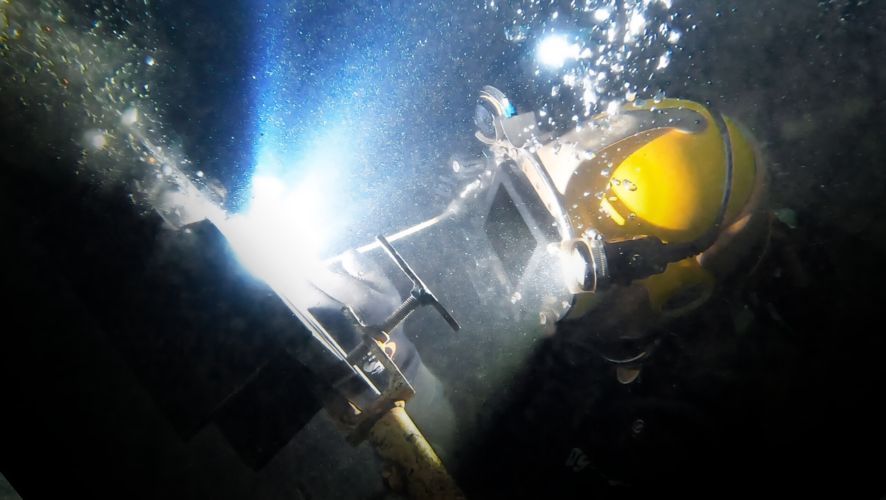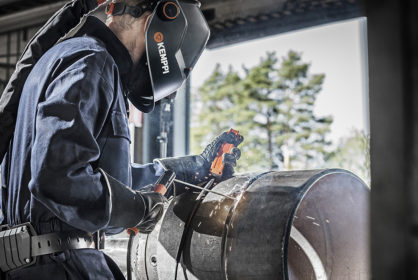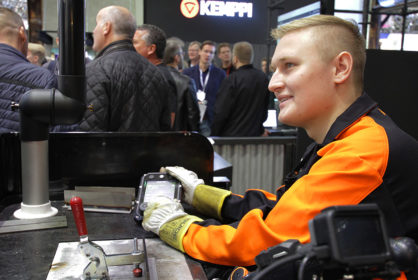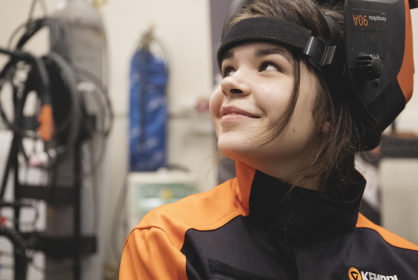This post is also available in: 

Welding underwater sounds challenging, and it is. Combining two expert skills, welding, and diving, requires plenty of practice and yet is not suitable for everyone. This type of work challenges a real expert and encourages them to show their skills.
Welding is a job that requires precision and sleight of hand. Certain welding applications are more challenging than others, and among these, stick welding (MMA) requires special dexterity and stability – the electrode holder must continuously be brought toward the workpiece to keep the distance between the electrode and the molten weld constant. Throughout the welding, it is important to keep the length of the arc as short as possible. The length of the arc increases easily as the electrode decreases in size during the welding. If this already sounds a bit challenging, how about we add another dimension? Put on a diving suit, descend in ice-cold sea water to a depth of 10 m where visibility is remarkably low, and keep on welding!
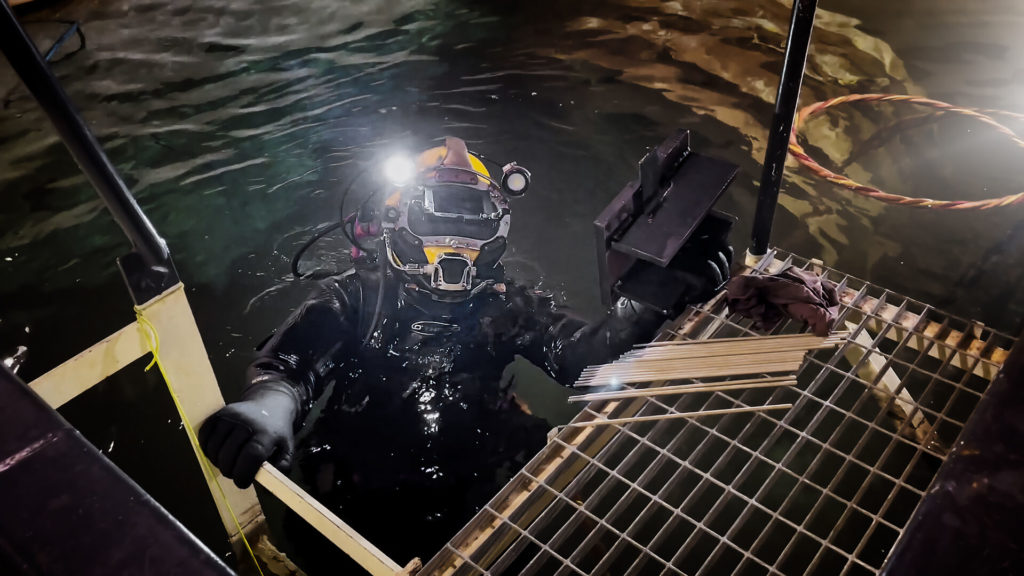
Underwater welding requires the right attitude and calm nerves
The Finnish DG-Diving Group does underwater maintenance, cleaning, and repair work for the needs of shipping companies and the shipyard industry. Underwater welding is very familiar to them. The company’s welders have a diving qualification, and they train regularly to maintain their skills and learn more. During the first few years of work, employees work as surface assistants and learn the best practices from their more experienced colleagues.
Simon Randström, 26, has worked at DG-Diving Group since high school. While looking for a job, he called the company, announced that he was going to work there, and got a job. With a good attitude, know-how, and hard work, Randström has progressed to diving supervisor.
“This kind of work does require keeping calm and staying focused. You can’t get nervous underwater, and you have to be prepared for unexpected situations”, Randström advises.
When visibility is less than half a meter, reach is challenging, and the work positions are demanding – even routine welding work can take up to four times more than when it is done on land. If the task is very time-consuming or the welder is not able to maintain focus, another welder takes a turn. In ship repair work, time is money – holding a ship costs money, and work must be done as efficient as possible.
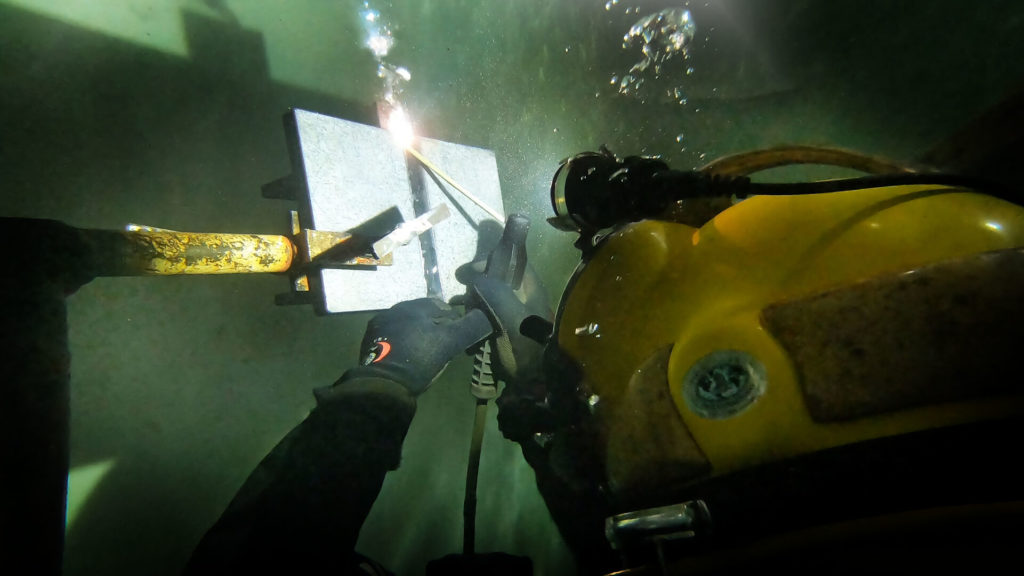
An optimal outcome with the proper equipment
Depending on the workpiece and task, underwater welding is done either as wet welding or dry welding. In wet welding, the welder is underwater, while in dry welding, a sealed chamber is placed over the welding spot and the water is removed. The welding itself is performed from inside the ship, which enables more precise work and different welding applications.
In wet welding, a welder’s best friend is a compact stick machine that keeps the arc stable and does its job reliably from start to finish. There is no need for versatile additional features or digital adjustments.
” The best machine is compact and guaranteed in all situations”, described Randström. His favorite is Kemppi’s Master S. Thanks to its small size and reliable and simple functions, the machine has already completed several tasks in many countries. Besides a good stick machine, wet welding requires special varnish-coated welding sticks that do not get wet before coming into contact with the arc. Wet welding also requires an isolated electrode holder that prevents exposure to an electric shock, even in water.
When it comes to underwater welding, the conditions, workpieces, and tasks are unique challenges that fascinate a true expert. When a professional underwater welder has compact and reliable tools to work with, challenges become opportunities.
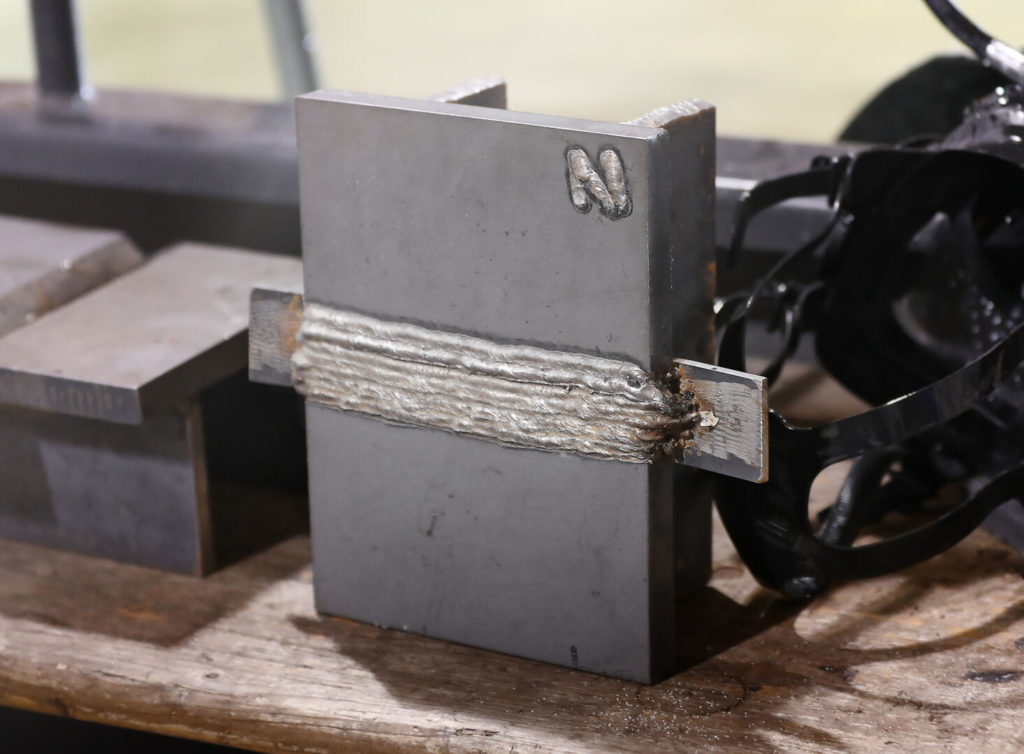
Do you want to learn more about underwater welding? Please take a look at the reference story of DG-Diving Group.









